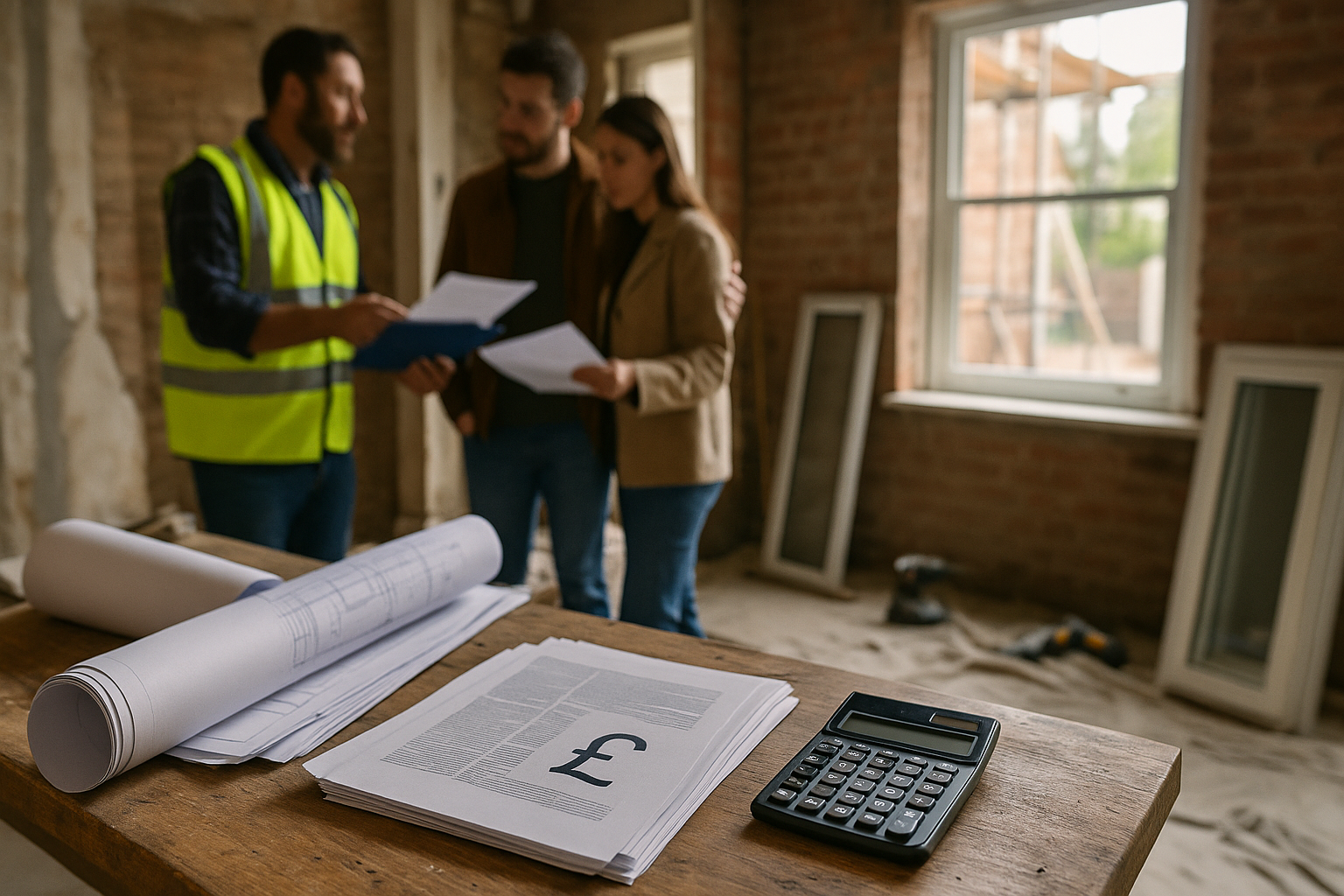In the UK most building work attracts the standard 20 % VAT rate, but HMRC allows a reduced 5 % rate in very specific renovation and conversion scenarios. Understanding the rules is worth real money: on a £60 000 refurbishment the difference between 20 % and 5 % is £9 000 in VAT. This guide unpacks the regulations, evidence you need, and common traps so you can plan with confidence.
1. Who Can Use the 5 % VAT Rate?
1.1 Empty Residential Properties (the “Two-Year Rule”)
- Definition: a building that has not been lived in for at least two continuous years before work starts.
- Proof HMRC accepts: recent council-tax history showing “long-term empty”, utility statements with nil usage, or a local-authority confirmation letter.
1.2 Conversions & Changes in Dwelling Numbers
- Turning a non-residential space (barn, office, pub) into a home, or
- Splitting one dwelling into several (or merging flats into one).
Both scenarios qualify for 5 % on labour and supplied materials.
1.3 “Relevant Residential Purposes”
Care homes, children’s homes, student accommodation and similar communal residences also attract the reduced rate when renovated or converted.
2. What Work Counts (and What Doesn’t)
| ✅ Qualifying at 5% | ❌ Always 20% |
| Structural repairs, rewiring, new kitchens and bathrooms fitted by the contractor | Pure professional fees (architects, surveyors) |
| Supply and install of building materials | Supply-only materials bought direct by the homeowner |
| Installing energy-saving materials (solar, heat-pump, insulation) – actually 0 % until 2027, then 5 % again | Landscaping, swimming pools, alarm systems unconnected to the build |
Tip: If a project mixes 5 %-eligible and 20 % work, ask your contractor to split the invoice so the lower rate is applied only to qualifying items.
3. Getting Your Contractor on Board
3.1 Nail the VAT Rate in the Contract
Add a clause stating which works are expected to qualify at 5% and require invoices to show the reduced rate separately. This protects both parties if HMRC ever asks for evidence.
3.2 When the Builder Refuses to Use 5%
Contractors carry the VAT risk, so they need evidence before lowering the rate. Provide:
- Council-tax “long-term empty” statement
- Letter from the local council confirming vacancy dates
- Photographic or utility-bill evidence of disconnection
If you can’t convince them, you must pay 20%. HMRC will not refund you directly — the supplier must correct their VAT return first.
4. The Paper Trail HMRC Expects
| Evidence | When to Use It |
| Council-Tax bill showing “Class C empty” | Empty homes, two-year rule |
| Utility statements with nil usage | Support vacancy claim |
| Electoral-roll extract | Confirms no occupants |
| VAT Notice 708/ certificate for conversions | Non-residential-to-residential projects |
| Building-control completion certificate | Proof of conversion completion |
Missing paperwork is the #1 reason reduced-rate claims fail in an HMRC inspection.
5. Common Pitfalls (and How to Dodge Them)
- Over-charged VAT – Pay 20% now and reclaim later? Sorry; only the contractor can reclaim. Get the invoice corrected instead.
- DIY Materials – Buy tiles yourself and you’ll pay 20%. If your builder supplies and fits them, it’s 5%.
- Starting Too Early – Work carried out before the two-year vacancy is up must be charged at 20%.
6. Advanced Notes for Developers & Investors
6.1 Reclaiming VAT
If you’re a VAT-registered developer intending to sell or rent, you may deduct input VAT even on standard-rated costs. But where a reduced 5% rate applies, only that portion is reclaimable.
6.2 Mixed-Use & Apportionment
Projects combining residential (5%) and commercial (20%) elements require a fair, reasonable split. Keep a cost spreadsheet with clear notes; HMRC can disallow arbitrary allocations.
7. Expert Tips & Best Practices
- Use VAT-savvy contractors. Ask how many reduced-rate jobs they’ve handled.
- Bundle qualifying items. Let the builder source materials to benefit from the 5%.
- Archive every invoice for six years. HMRC can review past returns.
- Plan green upgrades early. Energy-saving installs are zero-rated until 2027 — schedule them while the relief lasts.
8. Frequently Asked Questions
Does decorating count for 5%?
Only if it’s part of wider qualifying renovation; standalone painting is 20%.
My property has been empty 18 months — can I start now and switch to 5% later?
No. All work must commence after the two-year threshold.
Can I claim the reduced rate on a holiday let?
If you’re converting a non-residential building into a holiday let, yes — but subsequent furnishing upgrades are 20%.
Is there any VAT relief if the property was empty for 10+ years?
Yes. Under the DIY House builders Scheme you can reclaim VAT once the refurbishment is complete, subject to strict rules.
Conclusion: Turn VAT Rules into Renovation Savings
Mastering the HMRC 5% VAT on renovations isn’t just accounting trivia — it directly affects your bottom line. Check eligibility early, gather airtight evidence, insist on correct invoicing, and you’ll legally pocket the saving while staying fully compliant with 2025 HMRC guidance. Happy renovating!
Home Specialize – Elevating every step into a statement.

